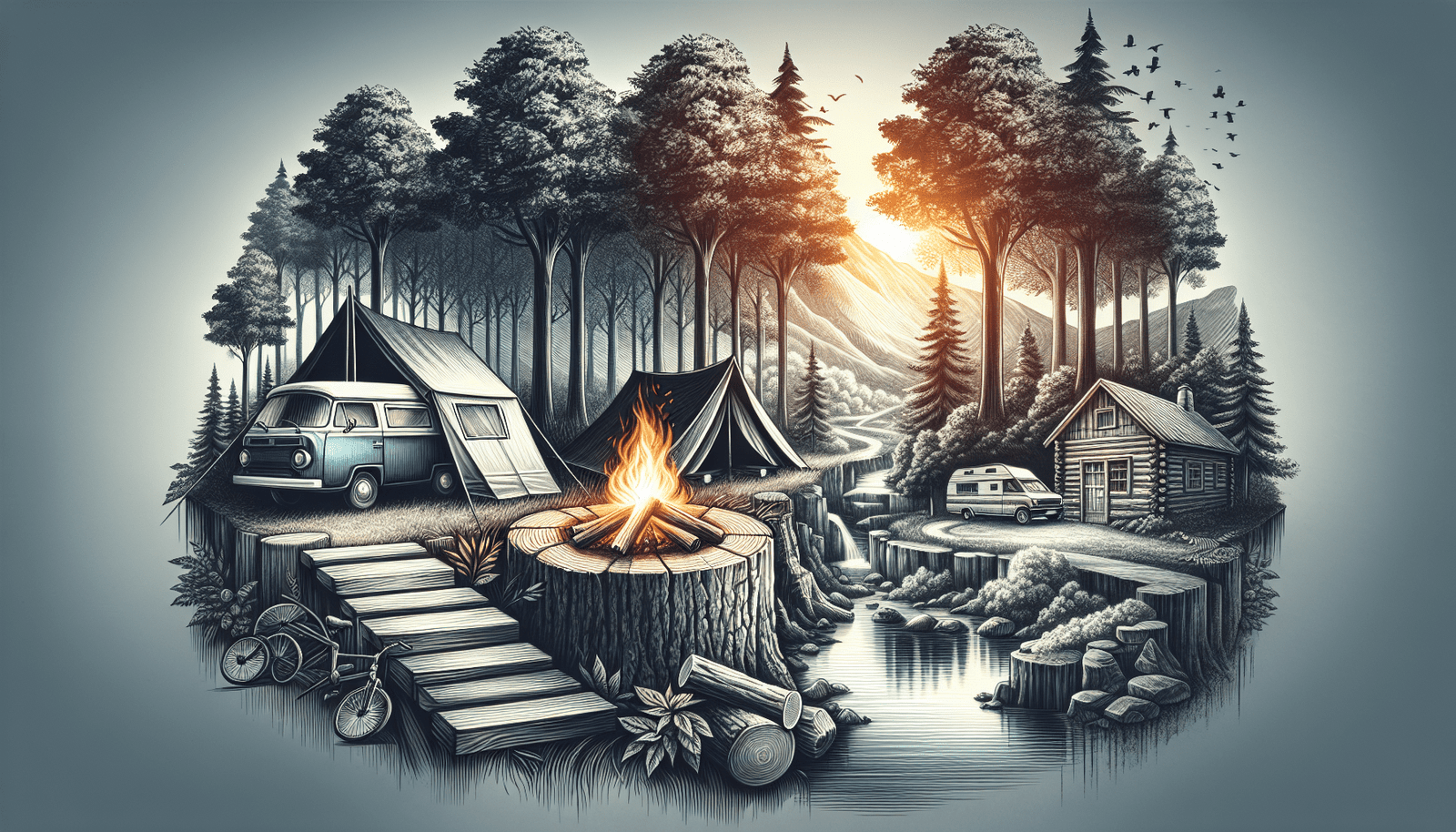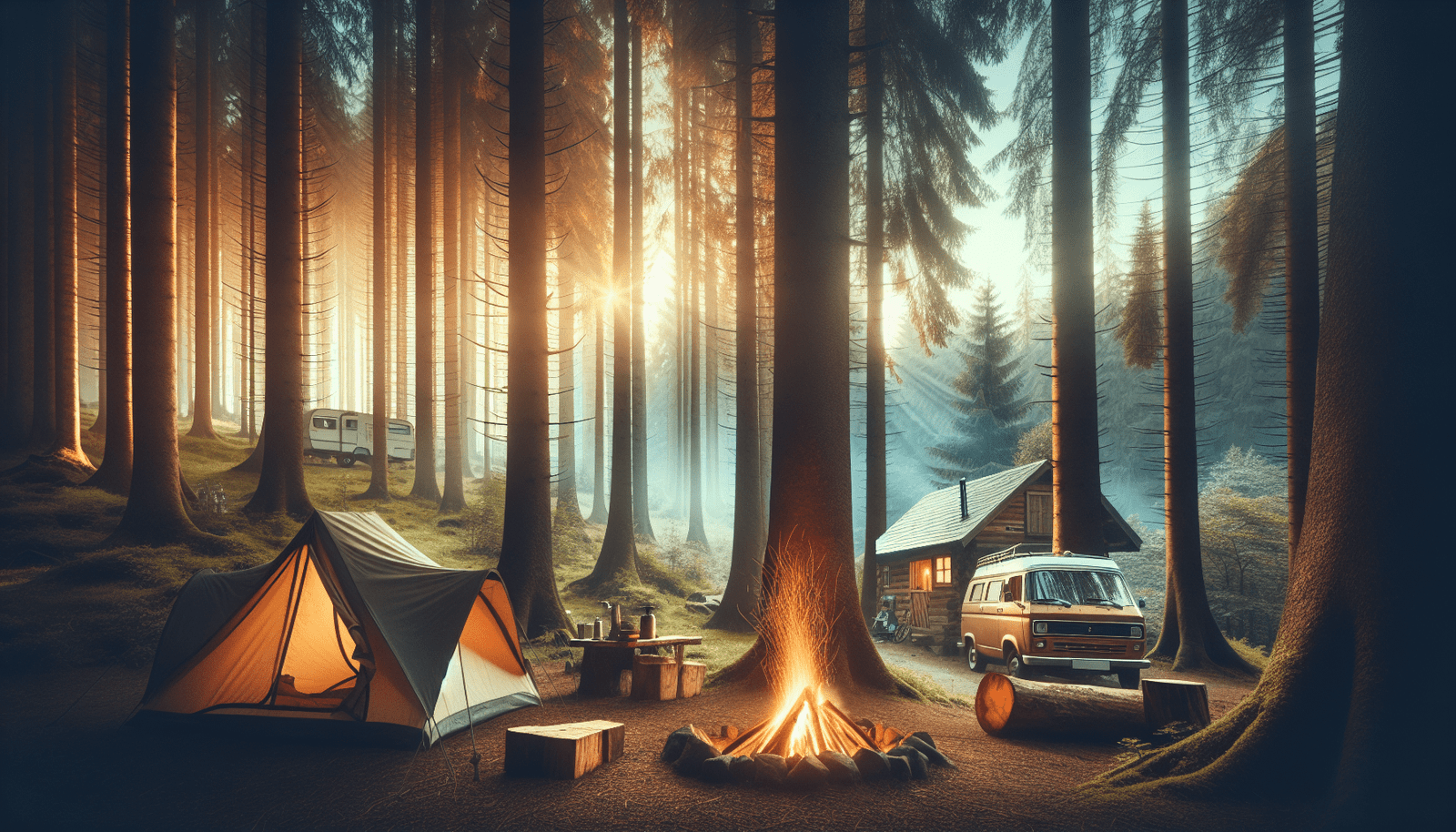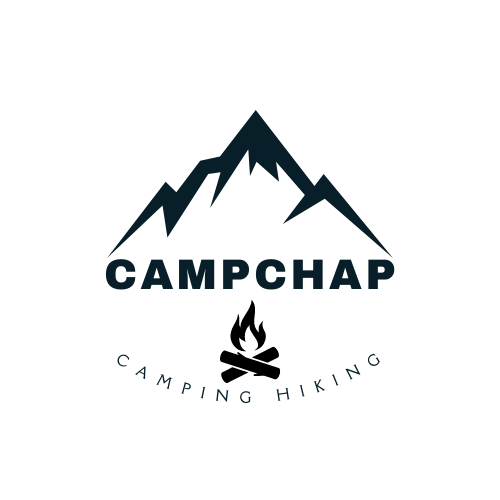In “What Are The Three Types Of Campsite?”, you’ll dive into the intriguing world of outdoor getaways, discovering different ways to embrace nature’s beauty. Whether you’re a seasoned camper or a newbie excited for your first night under the stars, this guide will introduce you to the three main types of campsites: frontcountry, backcountry, and glamping. Each offers a unique way to connect with the great outdoors, from the convenience of drive-up campgrounds to the rugged adventure of remote wilderness spots, and finally to the luxurious blend of comfort and nature found in glamping. This article will help you find the perfect campsite that suits your style and needs.
What Are The Three Types Of Campsite?
Have you ever found yourself wondering about the different types of campsites available for your next adventure? If you’ve been bitten by the camping bug, you’re not alone! Camping offers a unique connection with nature, a chance to unwind, and an opportunity to step out of the hustle and bustle of daily life. But before you pack your bags and set out, it’s key to understand the different types of campsites you could be experiencing.
In this article, we’ll break down the three main types of campsites to help you choose the one that best suits your needs, preferences, and level of comfort. Whether you’re a seasoned camper or a first-timer, knowing your options can make all the difference to your trip.

Type 1: Frontcountry Campsites
Frontcountry campsites, also known as car campsites, are the most accessible and often the most comfortable type of camping experience. These sites are typically located within close proximity to a road or parking lot, making it possible to drive right up to your campsite. They are ideal for families, beginners, or those who simply prefer more amenities.
Amenities
Frontcountry campsites frequently offer a wide range of amenities to make your stay more enjoyable and convenient. These may include:
- Restrooms: Flush toilets and public showers
- Picnic Tables: For eating and socializing
- Fire Rings: Perfect for roasting marshmallows or cooking meals
- Water Access: Often includes potable water spigots
Here’s a quick comparison of common amenities available at frontcountry campsites:
| Amenity | Availability |
|---|---|
| Restrooms | Common |
| Showers | Common |
| Picnic Tables | Common |
| Fire Rings | Common |
| Water Access | Common (potable) |
| Electricity | Sometimes available |
Pros and Cons
Frontcountry campsites come with their own set of advantages and disadvantages. Let’s explore these below:
Pros
- Easy Access: You can drive your car right up to the site, making it convenient to transport gear.
- Amenities: The availability of restrooms, showers, and potable water can make your stay much more comfortable.
- Ideal for Families: The easy access to amenities and the general safety of the area make these campsites great for family vacations.
- Emergency Services: Proximity to roads and populated areas means that help is often readily available in case of emergencies.
Cons
- Crowds: These campsites can get crowded, especially during peak seasons.
- Noise: Other campers and nearby roads can make these sites noisy, disrupting your peace.
- Less Privacy: Due to the high volume of campers, finding a secluded spot can be challenging.
Type 2: Backcountry Campsites
If you’re seeking a more immersive and rustic experience, backcountry campsites might be for you. These sites are located further away from roads and are typically accessible only by hiking, boating, or sometimes biking. They are perfect for those who want to get closer to nature and aren’t afraid of roughing it a little.
Requirements and Regulations
Backcountry camping often requires more preparation and awareness. Prior to your trip, check with local authorities for permits and regulations. Common regulations you may encounter include:
- Permits: Some areas may require a permit for overnight backcountry camping.
- Leave No Trace: You’ll be expected to follow Leave No Trace principles to minimize your impact on the environment.
- Camping Zones: Some areas have designated zones where you are allowed to set up camp.
Pros and Cons
Backcountry campsites offer a different set of advantages and challenges. Here’s a closer look:
Pros
- Solitude: Less crowded, providing a more peaceful and solitary experience.
- Closer to Nature: Often located in more remote, scenic areas.
- Adventure: The journey to the campsite itself can be an adventure.
Cons
- Limited Amenities: Often, there are no restrooms, showers, or potable water sources.
- Physical Demand: Accessing these sites usually requires physical effort, such as hiking or paddling.
- Safety Risks: More remote locations mean that emergency help is less accessible.
Essential Gear for Backcountry Camping
Backcountry camping requires specific gear essentials that you may not need for frontcountry camping. Here’s a checklist to get you started:
| Gear Item | Necessity |
|---|---|
| Lightweight Tent | Essential |
| Water Filtration System | Essential |
| Backpack | Essential |
| Map and Compass | Essential |
| First Aid Kit | Essential |
| Sleeping Bag and Pad | Essential |
| Portable Stove and Fuel | Essential |
| Multi-tool | Recommended |
Tips for Backcountry Camping
- Plan and Prepare: Research your route, check the weather, and pack accordingly.
- Safety First: Inform someone of your plans and estimated return.
- Leave No Trace: Pack out all trash and minimize campfire impact.
Type 3: Glamping Campsites
For those who want to enjoy the great outdoors without sacrificing comfort, glamping (glamorous camping) is the way to go. These campsites blend the beauty of nature with the luxury of a hotel, offering a unique way to experience camping.
Amenities
Glamping sites can range from luxurious tents to treehouses and yurts, often equipped with high-end amenities such as:
- Comfortable Beds: Often includes real beds with plush mattresses.
- Electricity: Access to power for lighting and charging devices.
- Private Bathrooms: Many glamping sites include en-suite bathrooms.
- Wi-Fi: Some sites offer internet access.
Here’s a look at the typical amenities found in glamping sites:
| Amenity | Availability |
|---|---|
| Comfortable Beds | Common |
| Electricity | Common |
| Private Bathrooms | Common |
| Wi-Fi | Sometimes available |
| Air conditioning/Heating | Sometimes available |
| Luxury Furnishings | Often included |
Pros and Cons
Glamping brings its unique set of advantages and disadvantages:
Pros
- Comfort: Experience the outdoors without sacrificing modern comforts.
- Accessibility: Suitable for those who may have mobility issues or health concerns.
- Unique Stays: Stay in a treehouse, yurt, or luxurious tent for a memorable experience.
Cons
- Cost: Often more expensive than traditional camping options.
- Less Authentic: May not offer the same rugged, back-to-nature experience.
- Availability: Can be less accessible, depending on your location and the season.
Ideal Candidates for Glamping
Glamping is perfect for those who:
- Want to experience nature without compromising comfort.
- Have health or mobility issues that make traditional camping challenging.
- Seek a unique, memorable stay.
Choosing the Right Campsite for You
Choosing the right campsite depends on your preferences, experience level, and the kind of adventure you’re seeking. Here’s a quick comparison to help you decide:
| Factor | Frontcountry | Backcountry | Glamping |
|---|---|---|---|
| Accessibility | High | Low | Moderate |
| Amenities | Many | Few | Many |
| Solitude | Low | High | Moderate |
| Physical Challenge | Low | High | Low |
| Cost | Low to Moderate | Low | High |
| Ideal For | Families, Beginners | Experienced Campers | Comfort Seekers |
Additional Considerations
Weather and Season
- Frontcountry: Typically open year-round but can be crowded during peak seasons.
- Backcountry: Best during moderate weather; extreme conditions can be hazardous.
- Glamping: Often available year-round; luxurious interiors make it comfortable regardless of weather.
Duration of Stay
- Frontcountry: Ideal for short to moderate stays.
- Backcountry: Great for extended trips if you love adventure but requires ample preparation.
- Glamping: Suitable for any length of stay, depending on your budget.
Group Size
- Frontcountry: Suitable for large groups and families.
- Backcountry: Typically better for smaller groups due to space and environmental impact.
- Glamping: Often limited in capacity; check accommodations in advance.

Final Thoughts
Understanding the three main types of campsites—frontcountry, backcountry, and glamping—helps you make informed decisions and tailor your camping experiences to your personal preferences. Whether you yearn for the rugged challenges of backcountry camping, the comforts of frontcountry sites, or the luxurious touches of glamping, there’s a perfect campsite awaiting you.
By knowing what each type offers and requires, you can ensure a rewarding, enjoyable, and memorable outdoor adventure. Now, all that’s left is for you to pack your gear (or not, if you’re glamping!) and immerse yourself in the beauty of nature. Happy camping!
